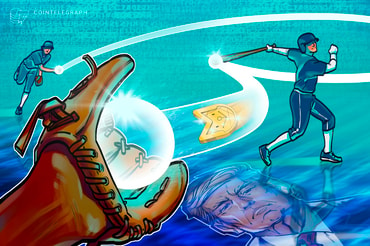Solana Adds ‘Blinks’ and ‘Actions’ so Users Can Trade Crypto on Their Favorite Social Apps

The Solana blockchain has been the epicenter of crypto’s latest “meme coin” frenzy, and a new set of features for the chain – so-called Actions and Blinks – could help make meme coins and other buzzy blockchain trends accessible to a wider audience.
Developed by the Solana Foundation in partnership with the Solana development shop Dialect, Blinks and Actions allow people to transact on blockchains directly from within the websites and social platforms they use every day.
“Solana Actions allow users to execute on-chain transactions across various platforms, including websites, social media and physical QR codes,” the Solana Foundation explained in a statement to CoinDesk. “Actions make it simple for developers to integrate everything you can do in the Solana ecosystem right into their applications.”
The tech will be supported by popular Solana wallets like Phantom and Backpack right out of the gate, and other platforms will be able to integrate it by following implementation instructions in the chain’s developer docs.
Meme coin traders buy and sell digital assets fashioned after everything from old-school internet memes to political figures. Solana has been the biggest hub for meme coins lately, serving as the home for such assets as Australian rapper Iggy Azalea’s viral Mother token ($MOTHER), which sits at a $70 million market cap less than a month out from its June launch, and dogwifhat ($WIF), the breakout star of the 2024 meme coin craze, which boasts a market cap above $2 billion.
Although meme coins have many naysayers (meme coin trading sometimes resembles gambling more than it does investing), some crypto advocates think the hype around them could help carry blockchains further into the mainstream.
But for blockchains to become ubiquitous, the tech underlying them desperately needs an upgrade. Complicated wallet software and hard-to-navigate trading platforms continue to make meme coin trading—and crypto trading in general—hard to access for newcomers.
That’s where Solana’s new features come in.
“Actions and blinks on Solana allow any website and application on the internet to be a distribution point for on-chain interactions – furthering the goal of mainstream adoption,” said Jon Wong, the Solana Foundation’s head of ecosystem engineering.
For example, a person could embed an “action” into an X post that references a particular memecoin. Users who see the post could click on it and immediately initiate a transaction on Solana, adding the token to their own blockchain wallet. Users can also use “blinks” (a portmanteau of “blockchain” and “link”) to share actions from other users with their own followings.
“From your X feed, you can buy an NFT, tip a creator, receive money, vote, stake, swap, and so much more.” says Chris Osborn, founder of Dialect.
Accessibility has long been blockchain’s Achilles heel, and the new Solana features follow similar moves from other ecosystems.
Blinks and actions share a close resemblance, for instance, to Farcaster – the X-like social platform on Coinbase’s Base blockchain. Farcaster users can easily embed direct links to blockchain assets in their posts, and specialized Fascaster clients like Kiosk – an up-and-coming utility from the creators of Web3 publishing platform Mirror – make blink-like calls-to-action a core selling point.
Farcaster, Kiosk and Solana are all clearly motivated by the fact that social media platforms are at the forefront of crypto culture—where users go to exchange memes, news and trading opportunities. Solana’s tech differs in that it plugs blockchain functionality into existing Web2 social apps rather than new, standalone Web3 apps.
“This makes so much sense in a social media feed,” Osborn told CoinDesk, but the Dialect founder hopes Actions could eventually disrupt how the web works at its very core.
“Delivering these actions into feeds like X, Reddit, maybe Discord soon – these other platforms where people want to have these Actions experiences – is just the beginning,” said Osborn. “What I’m really excited about is, what’s the non-skeuomorphic true ‘Web3’ internet equivalent of this? We don’t know what that is, but I think this idea of actions is what’s at the core.”
Edited by Bradley Keoun.
Disclosure
Please note that our privacy policy, terms of use, cookies, and do not sell my personal information has been updated.CoinDesk is an award-winning media outlet that covers the cryptocurrency industry. Its journalists abide by a strict set of editorial policies. In November 2023, CoinDesk was acquired by the Bullish group, owner of Bullish, a regulated, digital assets exchange. The Bullish group is majority-owned by Block.one; both companies have interests in a variety of blockchain and digital asset businesses and significant holdings of digital assets, including bitcoin. CoinDesk operates as an independent subsidiary with an editorial committee to protect journalistic independence. CoinDesk employees, including journalists, may receive options in the Bullish group as part of their compensation.
Sam is CoinDesk’s deputy managing editor for tech and protocols. He reports on decentralized technology, infrastructure and governance. He owns ETH and BTC.













